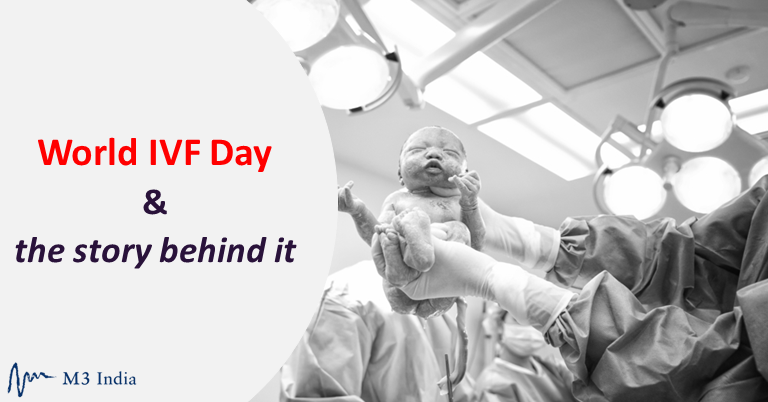World In Vitro Fertilisation (IVF) Day and the story behind it
M3 India Newsdesk Jul 25, 2019
We celebrate World IVF Day today to commemorate the trio of obstetrician and gynaecologist Dr. Patrick Steptoe, physiologist Robert Edwards, and embryologist and Nurse Jean Purdy, whose combined efforts brought about a breakthrough in medical science and gave the world its first IVF baby.

Louise Joy Brown’s birth was nothing short of a miracle for her parents Lesley and John Brown. The couple who couldn’t conceive for nine years due to Lesley’s blocked fallopian tubes, were given hope for a joyous vision of a baby in their arms by their obstetrician Patrick Steptoe.
Dr. Steptoe, physiologist Robert Edwards and Nurse Jean Purdy were the team behind the first successful in-vitro fertilisation or IVF. Although biochemical pregnancy was discovered and attempted earlier, American biologist Landrum Shettles performed an IVF in 1973, only to be forbidden to proceed by his department chairman. Later, Dr. Steptoe and Robert Edwards gave IVF a go in 1976, which resulted in an ectopic pregnancy. In November 1977, the trio attempted IVF for Lesley Brown as an experiment.
The procedure involved removing a mature egg from one of her ovaries and combining it with her husband’s sperm in a petri dish. In case of Lesley, she ovulated naturally, which gave the researchers the one follicle they needed. Jean Purdy, took the aspirated follicle with the surrounding fluid to Edwards. The egg and sperm were kept together until they matured into an 8-cell embryo. Four days later, they transplanted it into Lesley’s uterus. On 25th July 1978, the couple welcomed a baby girl, later named Louise Joy Brown, who also found fame as the world’s first test tube (IVF) baby.
Patrick Steptoe CBE FRS, Sir Robert Edwards, FRS CBE MAE and Jean Purdy, embryologist and nurse, are since known as the pioneers of IVF. Robert Edwards was also awarded the 2010 Nobel Prize in Physiology or Medicine for his contribution to the development of IVF. However, Steptoe and Purdy were not considered eligible as the Prize can’t be awarded posthumously.
Besides being the Director of the Centre for Human Reproduction, Oldham General Hospital, Steptoe’s achievements include being the first one to use laparoscopy for gynaecological disorders and sterilisation and later, also for IVF experiments. He, along with Edwards and Purdy, had to face criticism for his experiments on IVF, however, the birth of Louise Brown in 1978 was looked upon as a welcome development.
Many clinics in England followed suit and helped plenty of couples have their babies through IVF. Surgeons in other countries also delivered their first test tube babies. With rising demand, Steptoe, Purdy and Edwards also together founded the Bourn Hall Clinic in Cambridgeshire.
Once a subject of scrutiny, IVF is now openly accepted in most countries. In fact, due to the rise in infertility rate among both men and women, IVF has also become quite common. Now couples also resort to donors for eggs or sperm to conceive through IVF - the same assisted form of reproductive technology that heralded a new age in the field of gynaecology. As per a 2018 report by the European Society of Human Reproduction and Embryology, assisted reproduction methods like IVF have helped millions of couples around the world and the figures state at least 8 million babies since 1978.
-
Exclusive Write-ups & Webinars by KOLs
-
Daily Quiz by specialty
-
Paid Market Research Surveys
-
Case discussions, News & Journals' summaries
